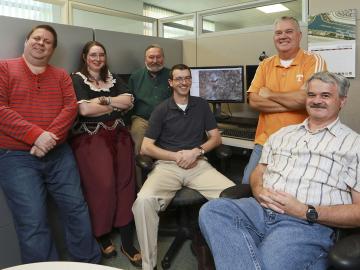Filter News
Area of Research
- (-) Fusion Energy (4)
- (-) Geographic Information Science and Technology (2)
- Advanced Manufacturing (4)
- Biological Systems (4)
- Biology and Environment (56)
- Biology and Soft Matter (1)
- Building Technologies (3)
- Chemical and Engineering Materials (2)
- Chemistry and Physics at Interfaces (6)
- Clean Energy (104)
- Computational Chemistry (1)
- Computational Engineering (1)
- Computer Science (2)
- Electricity and Smart Grid (1)
- Energy Frontier Research Centers (7)
- Energy Sciences (1)
- Fuel Cycle Science and Technology (1)
- Functional Materials for Energy (6)
- Fusion and Fission (19)
- Isotope Development and Production (2)
- Isotopes (15)
- Materials (115)
- Materials Characterization (2)
- Materials Synthesis from Atoms to Systems (5)
- Materials Under Extremes (7)
- National Security (26)
- Neutron Data Analysis and Visualization (2)
- Neutron Science (42)
- Nuclear Science and Technology (8)
- Quantum Condensed Matter (2)
- Reactor Technology (1)
- Supercomputing (93)
- Transportation Systems (2)
News Type
Media Contacts

ORNL will lead three new DOE-funded projects designed to bring fusion energy to the grid on a rapid timescale.

Creating energy the way the sun and stars do — through nuclear fusion — is one of the grand challenges facing science and technology. What’s easy for the sun and its billions of relatives turns out to be particularly difficult on Earth.

ORNL will team up with six of eight companies that are advancing designs and research and development for fusion power plants with the mission to achieve a pilot-scale demonstration of fusion within a decade.

Bruce Lester has had a lot of jobs: fisherman, horse trainer, “professional stair builder.” He last worked for a real estate company, surveying land using geographic software. “When the bottom fell out of the construction industry and the company downsized, I got laid off,”

When it’s up and running, the ITER fusion reactor will be very big and very hot, with more than 800 cubic meters of hydrogen plasma reaching 170 million degrees centigrade. The systems that fuel and control it, on the other hand, will be small and very cold. Pellets of frozen gas will be shot int...





